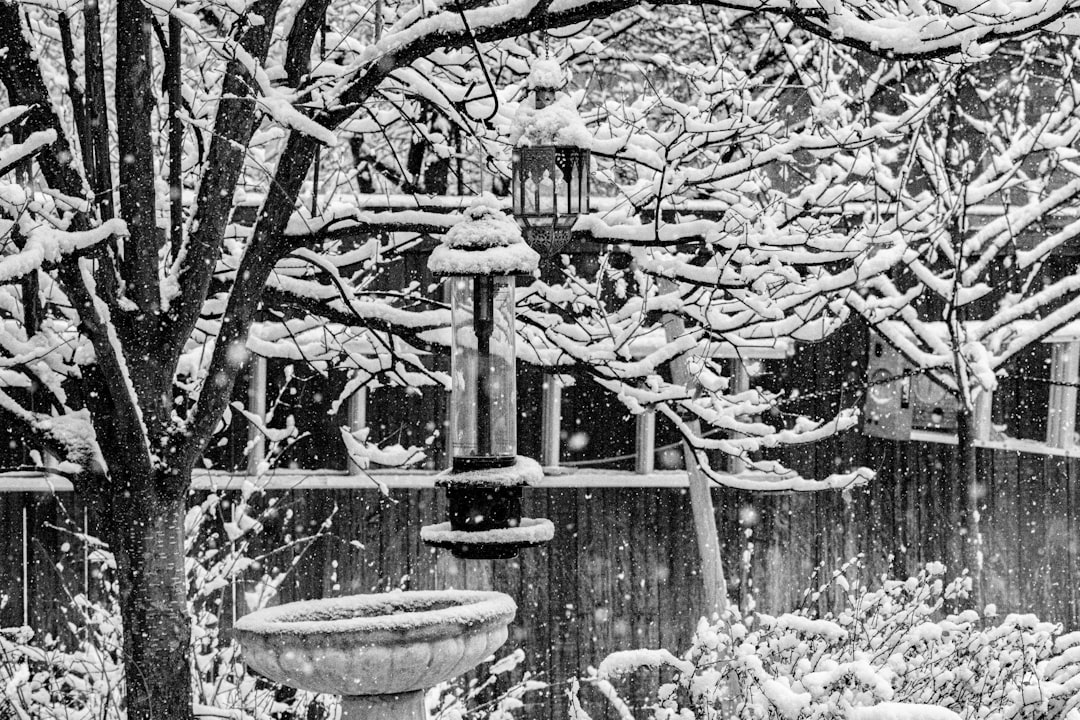The Enchanting Allure of the Japanese Snowbell in Your Garden

The Japanese Snowbell, a true gem in the world of gardening, is a flowering tree that captivates with its beauty from the early days of spring well into the late fall. Despite its somewhat finicky nature, the rewards of cultivating this tree are truly worth the effort.
### Spring: A Delicate Beginning
As spring unfolds, the Japanese Snowbell awakens from its winter slumber. The first signs of life are the tender buds that begin to form on the branches. These buds gradually swell, promising the arrival of the tree's signature flowers. The flowers of the Japanese Snowbell are a sight to behold. They are small, white, and bell - shaped, hanging delicately from the branches like a cascade of tiny bells. The fragrance that accompanies these flowers is subtle yet sweet, adding an extra layer of charm to the early spring garden. The tree's foliage also starts to emerge during this time, with fresh, green leaves that provide a lovely backdrop for the blossoms. The contrast between the white flowers and the green leaves creates a visually stunning display that can transform any garden into a peaceful oasis.
### Summer: A Time of Growth
Once summer arrives, the Japanese Snowbell enters a phase of active growth. The flowers may have faded, but the tree doesn't lose its appeal. The leaves continue to expand and darken in color, providing a lush canopy of green. This canopy offers shade, making it an ideal spot to relax on a hot summer day. The tree also starts to produce small, round fruits during the summer months. These fruits are not only interesting to look at but also serve as a food source for various birds and small animals. The presence of wildlife around the Japanese Snowbell adds to the overall ecosystem of the garden, creating a dynamic and lively environment.
### Fall: A Colorful Farewell
As the days start to shorten and the temperatures begin to drop, the Japanese Snowbell undergoes a remarkable transformation. The leaves turn vibrant shades of yellow, orange, and red, creating a spectacular autumn display. The colors are so intense that they can rival those of more well - known fall foliage trees. The tree's branches, now adorned with the colorful leaves, stand out against the backdrop of the changing landscape. This is a time when the Japanese Snowbell truly shines, attracting the attention of passersby and garden enthusiasts alike. Even as the leaves eventually fall to the ground, they create a carpet of color that adds to the beauty of the garden floor.
### The Picky Nature of the Japanese Snowbell
While the Japanese Snowbell is undeniably beautiful, it is also quite particular about its growing conditions. It prefers well - drained, acidic soil that is rich in organic matter. The tree also needs partial shade, especially in areas with hot summers. Too much direct sunlight can cause the leaves to scorch, while too much shade can result in poor flower production. Additionally, the Japanese Snowbell is sensitive to drought and requires regular watering, especially during dry spells. Pruning is also an important aspect of caring for this tree. It should be done in the late winter or early spring to remove any dead or damaged branches and to shape the tree. However, over - pruning can be detrimental to the tree's health and should be avoided.
### Incorporating the Japanese Snowbell into Your Garden
If you're considering adding a Japanese Snowbell to your garden, there are a few things to keep in mind. First, choose a suitable location that meets the tree's growing requirements. You can plant it as a specimen tree in a lawn or incorporate it into a mixed border with other shrubs and perennials. The tree's small to medium size makes it a great choice for smaller gardens. You can also pair it with other spring - flowering plants to create a diverse and colorful display. When planting, make sure to dig a hole that is twice as wide as the root ball and just as deep. Backfill the hole with a mixture of soil and organic matter, and water the tree thoroughly. Mulching around the base of the tree can help retain moisture and keep the roots cool.
In conclusion, the Japanese Snowbell is a remarkable flowering tree that offers year - round interest in the garden. Its delicate flowers, lush foliage, and vibrant fall colors make it a standout addition to any landscape. Although it may be a bit picky about its growing conditions, with proper care and attention, this tree can thrive and become a focal point in your garden for years to come.